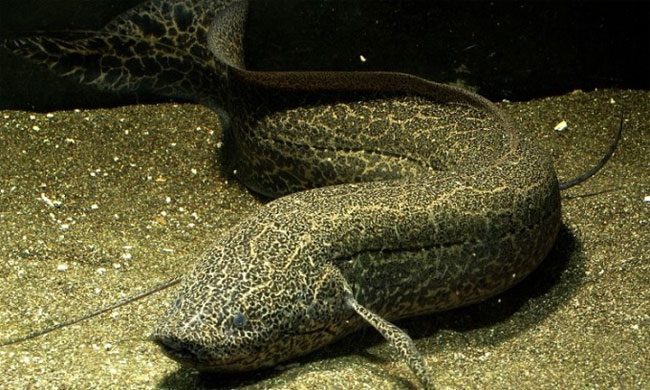The cocoon made from living tissue plays a crucial role in protecting lungfish from the intense heat of the Sun and bacteria in harsh conditions.
A research team from the University of New Mexico, the University of California, and the University of Murcia discovered that the cocoon created by lungfish living in the dry lake beds of Africa is composed of antibacterial living tissue. They published their findings in the journal Science Advances.

Lungfish are renowned for their ability to survive for extended periods without water. (Photo: Primitive Fishes)
Lungfish inhabit various regions in Africa, often in small lakes that can dry up during prolonged dry spells. When this occurs, lungfish create a cocoon around their bodies using mucus. This allows them to “estivate” for up to 5 years without water. The purpose of the cocoon is to protect the lungfish from drying out while waiting for a return of moist conditions. In the new study, the team of experts found that the cocoon serves a more special role than they initially thought.
Previously, researchers believed the cocoon was merely a type of protective covering, with no other function than to prevent moisture loss under intense sunlight. Now, they have discovered that the cocoon is composed of antibacterial tissue.
To learn more about lungfish and their cocoon, the researchers began analyzing its composition in 2018. They found that granulocytes migrate during the time the lungfish waits for water to return. Recently, the research team examined the cocoon more closely and found it filled with granulocytes. These granulocytes migrate from the skin into the cocoon slowly and consistently. The cocoon is not just dried mucus; it is also a living part of the lungfish.
Images show that granulocytes create traps that immobilize bacteria. When the research team removed the traps from some specimens, the lungfish became more vulnerable to skin infections and bacteria causing blood infections. Some forms of bacterial infections can lead to hemorrhaging. The research team concluded that, in addition to protecting lungfish from heat, the cocoon also helps them avoid bacterial infections.


















































